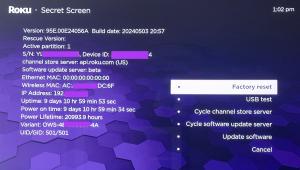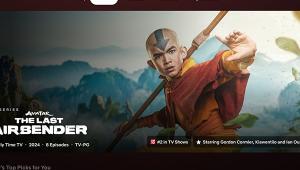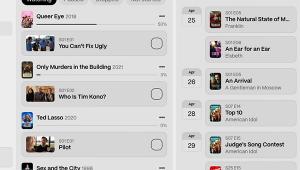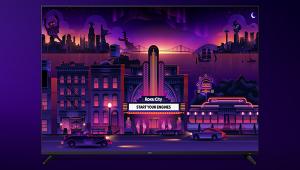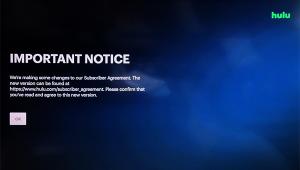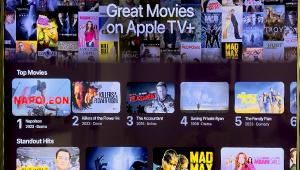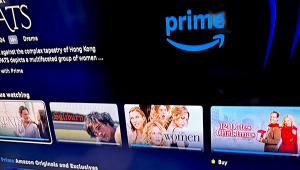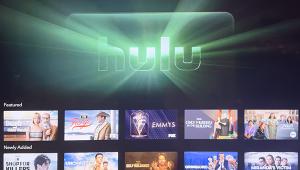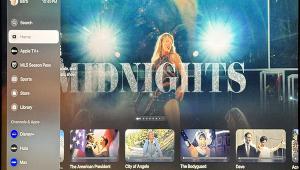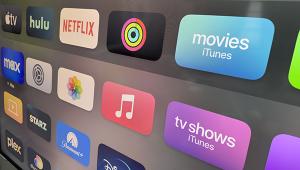I just want a built in HTML + Flash web browser.
How Will We Search for TV Shows in the Future?

Traditional TV providers struggle to remain relevant to the adults of the future. Research from Parks Associates, organizer of the conference, shows that young adults (“millennials”) have grown up with streaming video and don’t have the same relationship to traditional TV. Almost a quarter of millennials (23%) have no pay TV services. Consider that in 2020 one in three adults will be a millennial. While they may watch video on phones, tablets, and laptops, eschewing big screen TVs, it’s likely that their choice of device will change as they start families in the future. What won’t change is their view on how they receive TV. Increasingly, they don’t relate to the ABC, NBC, CBS model of linear TV. Netflix, Hulu, and Amazon are becoming their broadcast networks.
How we receive TV is already changing. This has been a recurring subject in the past few months as live TV services are becoming available online through Playstation Vue, AT&T’s DirectTV Now, and Hulu. Similarly, TimeWarner Cable offers an app on Roku boxes rather than supplying a set top box. And Twitter just announced that it will live stream NFL games on Thursday nights.
In the initial forays of offering cable TV content via streaming, companies have offered “skinny bundles.” While it’s 15 or 20 channels instead of 400, it’s far from the dream of being able to pick and choose only the channels we want. During a panel entitled “OTT and the Transformation of Pay TV,” Head of TV and Media for Ericsson Elizabetta Romano made it clear that she was interested in the “Elizabetta channel” that would include only the content she wants to see with ads that are targeted at what she’s interested in (she’s willing to give up a bit of privacy to receive relevant commercials).
As Cablevision’s Executive Vice President of Operations Rob Comstock said in his Keynote, “My parents are in their 70s. My dad lives in Florida and I see him six or seven times a year. Every time I see him, my dad and I have the same conversation. This may sound familiar to some of you. ‘I pay too much for TV. Why are you making me pay for channels I don’t watch?’”
Michael Hawkey, Senior VP, Discovery Business Group for Rovi (which recently acquired TiVo), recalled that the industry discussed the desire to receive pay TV channels “ala carte” on a Connections panel he attended 10 years ago. However, TV providers are contractually locked into offering channel bundles.
Comstock explained that networks and cable channels initially made their money from ad revenue but switched to charging pay TV providers for retransmission or broadcast rights. These rights now bring in a combined total of over $50 billion per year. Within those contracts, the provider was required to fulfill a minimum carry clause. The cable company may not be able to get enough people to subscribe to a single channel (for example the History channel), but there will be those who will want Food network, or Comedy Central. When bundled together, they get a combined number of customers who want at least one of those channels which fulfills their minimum. If channels were to be sold separately, they would have potentially smaller customer base and a channel like ESPN might cost as much as $50 on its own.
Offering fewer channels in a skinny bundle is not the answer. Cutting the cord isn’t about paying less, it’s about controlling our choices. Cord cutters aren’t watching less TV. They want to watch what they want, when and where they want it without thinking about the source. Back to Elizabetta’s channel, she wants it to be filled only with the shows she wants to see.
But that scenario is considered impractical and, therefore, unlikely in the future. How would Elizabetta find new shows she might be interested in? In the panel entitled “Evolving Cloud Services and Content Access” speakers discussed how to solve the problem of finding what we want to watch. It was revealed that 35% of viewers found a new show by seeing a commercial or trailer about the show, and 15% watched a show on the recommendation of a friend. No one in the survey found a new show through app recommendations. The General Manager of content for Netflix said they gave up on the idea of gearing content offerings to the individual viewer. When they put up a new show that they didn’t think that was going to be a success, like Making a Murderer, they expected it to be buried somewhere on Netflix. Taking away the ability for the consumer to choose, and feeding video to the consumer will never work because they can’t predict hits. Perhaps that will change as recommendations become more relevant and include results from pay TV.
Global search is becoming a part of streaming devices. Many devices, like the Fire TV, promised global search results. On a Fire TV, results are consistent when a title is found in Amazon Video, but only occasionally appear from “free” offerings on Hulu, Netflix, and other services. Xbox One displays results from a number of services including pay TV when it is connected to the game console. The newest Siri update on the Apple TV shows results from a number of streaming services beyond iTunes. Siri voice search is also available in specific apps.
In my experience, and as confirmed by Roku Vice President of Consumer Insights Tom Love, the Roku box has one of the best global search features. Because Roku doesn’t have their own streaming service, it’s easier to search all apps equally, without a conflict of interest or agenda. Still, Roku doesn’t include results from pay TV.
The newest update of the Dish operating system not only includes recommendations from upcoming linear TV shows and movies, it also lists items from On Demand and from Netflix, which is available to stream directly from the Hopper receiver. This approach to search is a step in the right direction. Cablevision now includes Hulu programming in the onscreen program guide as though it was simply another TV channel.
While these are advancements toward finding what you want to watch from any source, many cable providers are reluctant to include streaming results in search. Pay TV providers don’t want their customers “eyeballs” to stray away from their service. Panelists lamented that they have the technology to create a great search if metadata was improved for both pay TV and streaming titles. In a perfect world the content lawyers and the technology engineers would be able to get together to create a search engine that would offer the title you want regardless of its source—a particular online service or pay TV. Content licensing and rights is the biggest obstacle in receiving true global search results.
Beyond skinny bundles, individual channels and search for title on streaming and pay TV, the millennials have a different idea of what content they like to watch. Vice President of Marketing and Distribution for Ellation , Arlen Marmel discussed the millennials’ appetite for user-created content like that of the aggregated service Ellation, which streams Creativebug arts and crafts videos as well as anime and manga content from Crunchyroll.
Marmel described the situation, “I don’t perceive that a skinny bundle that costs $20 solves the problem. Particularly because the narrative, and this has been that this is for millennials. Because of the hang-ups about the incumbent ecosystem, you are still getting a package of stuff (content) that doesn’t really make sense. Until we get to a point that there is a real curation and there is real bundling around content that is compelling…I’m not sure that the skinny bundles of today solve those problems.”
The Ellation exec further discussed that the channels or “brands” coming into our homes must be merited. The content we bring into our homes should be “pulled” (requested) rather than pushed upon us. There is a vast audience of millennials and others who want to see content beyond the 22-minute format (length of 1/2 hour TV show) that is considered high quality video. To prove the point, he noted that Ellation has 750,000 paying subscribers.
The discussion of interactivity and community with our TV shows is foreign to those of us who have had a couch potato relationship to our TV. Perhaps the ubiquity of screens is begging us to become social when we view entertainment.
Any discussion of the future of technology can be turned on its head when an unexpected device or service disrupts our current views and habits. Sixty years ago, cable TV was a disrupter in a world where all TV was OTT—over the top of our heads in broadcast signals to antennas. Today streaming video and media players are the disruptors. We can’t be sure what will come next as it will likely be a result of the demand of the millennial generation. In the near future, we can only hope that pay TV providers and OTT services will play well together and offer us a unified experience to easily find what we want to watch from a single menu.
- Log in or register to post comments


However, it's essential to stay informed about the services you use. For example, if you encounter any issues or want to share your thoughts on services like you can visit sling tv reviews to provide feedback, report problems, or learn more about how the platform is evolving to meet user needs in this ever-changing media landscape.

